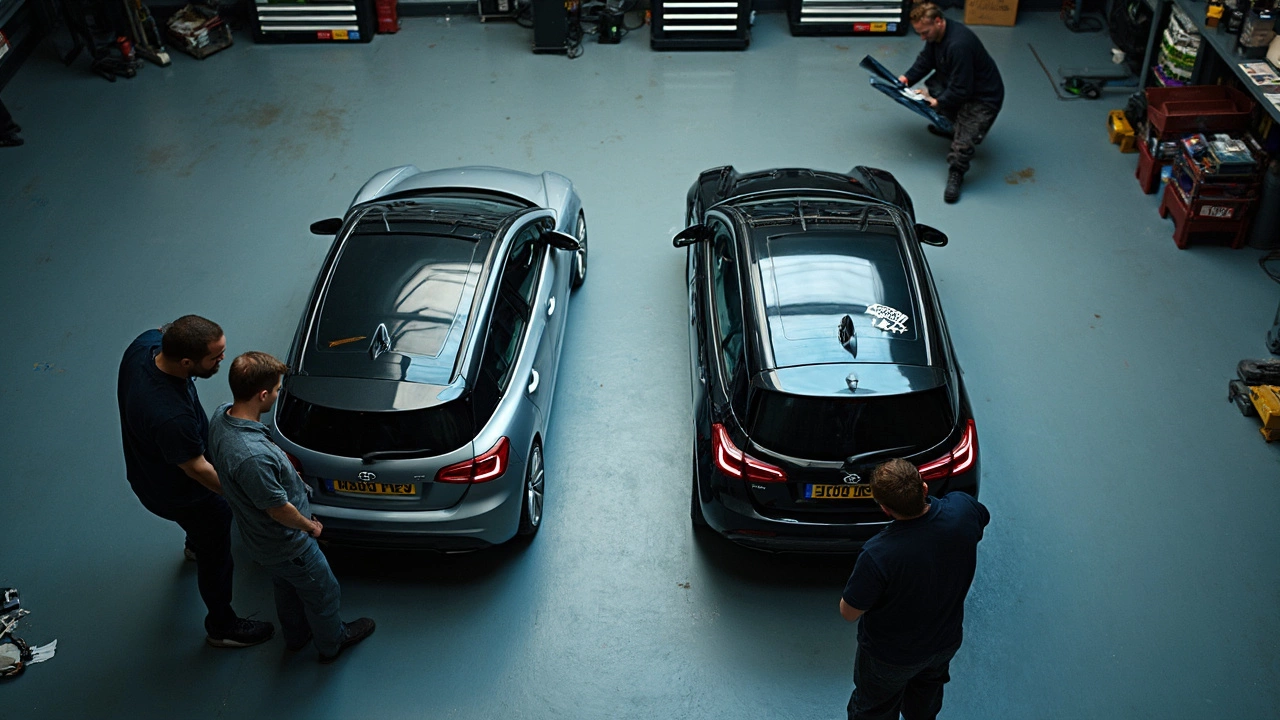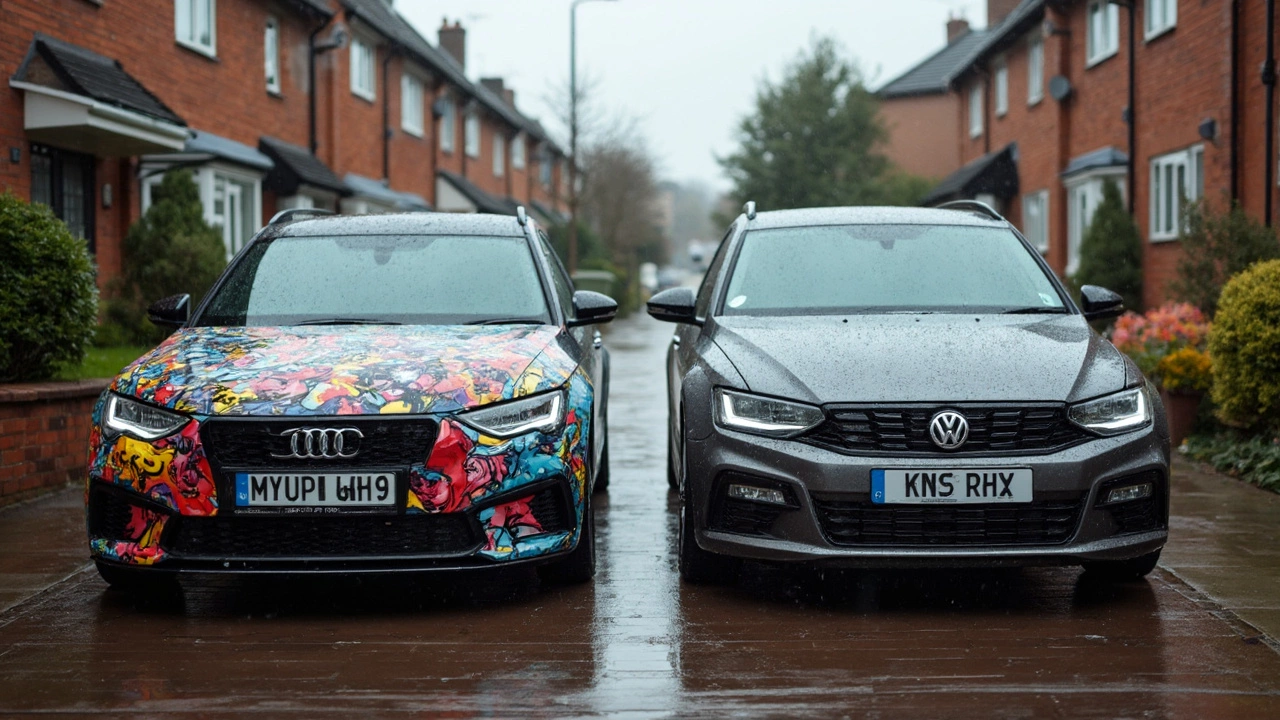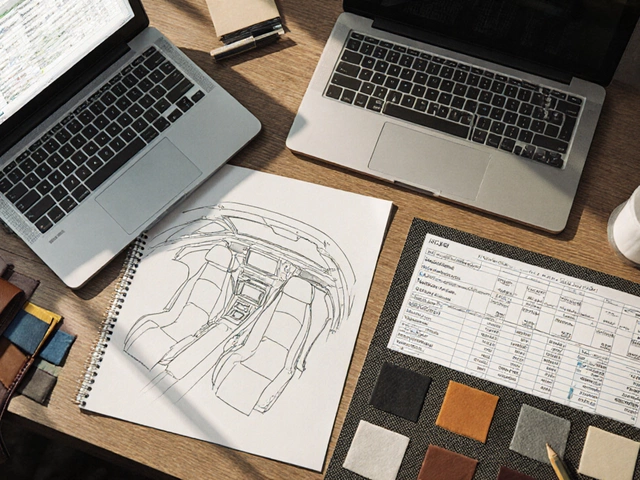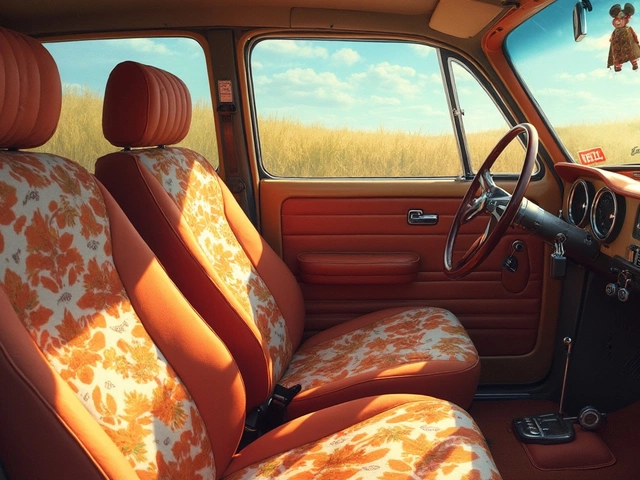If you’re staring at a wall of choices for dressing up your car, figuring out the difference between a 'decal' and 'vinyl' can save you a headache—and probably a few bucks. Most people think these terms mean the same thing, but they actually play different roles when it comes to customizing your ride.
When car owners talk about decals, they're usually thinking about those cool graphics, logos, or even racing stripes you see on windows or bumpers. But dig a little deeper, and you’ll find out almost all car decals are actually made of vinyl. Here’s where it gets confusing: not all vinyl stickers are true 'decals.' Some peel off in months, others handle snow and sun for years. Big difference, right?
The trick is knowing how—besides just price—they stack up for real-life use. For example, sayings or pinstripes you see on classic cars? Most are vinyl decals. But some cheap options on online marketplaces will bubble, fade, or start peeling in less than one summer. So, before you shell out cash, it helps to know exactly what you're getting.
- Decal and Vinyl—What’s the Difference?
- Durability and Weather Resistance
- Look, Feel, and Installation
- Cost and Real-World Tips
Decal and Vinyl—What’s the Difference?
Here’s something most car folks don’t realize: pretty much every decal you see on a car is made of vinyl, but not every piece of vinyl is a decal. A decal is basically a vinyl graphic that has a design or lettering printed or cut out, and it’s made to transfer that design cleanly onto your car. It comes sandwiched between two layers—the backing paper and the transparent transfer tape or sheet.
Now, when people talk about vinyl for cars, they’re often referring to bulk rolls of colored or printed sheets you can cut yourself or use to “wrap” big sections like hoods, roofs, or even the whole car. So, if you’re getting flames, logos, or text on your doors, you’re talking about decals. If you’re after a black roof look or want to protect the paint, that’s a vinyl wrap. The main difference? It’s how you use and apply them.
According to 3M, a leader in automotive films, "Decals are typically easy to apply, since they're pre-cut to shape, while vinyl wrap material requires cutting and special techniques for best results."
Here’s how it usually breaks down on cars:
- Car decals: Pre-cut, come with transfer tape, show off designs or names, and go on windows, paint, or bumpers.
- Vinyl wrap: Comes in bigger sheets or rolls, used to cover larger car areas, not always for graphics.
- Vinyl stickers: Often sold cheap, can be made of thin vinyl, may not last as long, and sometimes don’t have transfer tape.
The takeaway? If you want something precise and sharp, like a brand logo or pinstripe, reach for car decals. If you want to change your whole car’s look, that’s when vinyl wrap shines. Simple as that.
Durability and Weather Resistance
This is where the rubber meets the road for car decals. You can’t call a decal or sticker 'good' if it flakes off after one rainy weekend or cracks in the sun. Real-deal vinyl decals, especially ones advertised as automotive-grade, are built to handle the wild mix of heat, cold, and UV rays your car faces every year.
The thing to check first is the material. Most solid, long-lasting decals are made from cast vinyl, which flexes and stretches with your car’s curves. On the flip side, cheaper ones might use calendered vinyl—these tend to shrink and crack faster, especially under direct sunlight. If a seller doesn’t specify, it’s probably the cheap stuff.
- Professional-grade automotive vinyl lasts 5–8 years on vehicles when installed correctly.
- Budget stickers often lose color and start to peel after 6–12 months outdoors.
- The adhesive in high-quality vinyl is designed to resist rain, car washes, and cold snaps. Inferior options usually leave sticky residue or rip when you remove them.
When it comes to bad weather, the protection level isn’t the same for every brand or product. Here’s a quick look at what you can expect from different types:
| Type | UV Resistance | Water Resistance | Expected Lifespan |
|---|---|---|---|
| Cast Vinyl Decal | Excellent | Excellent | 5–8 years |
| Calendered Vinyl Decal | Fair | Good | 1–3 years |
| PVC/Plastic Cheap Sticker | Poor | Fair | Less than 1 year |
If your car lives outside or gets washed often, don’t expect a bargain decal to look sharp for long. Spending a bit more upfront means less fading, less peeling, and one less thing to worry about. Worth mentioning: premium brands like 3M and Oracal back up their lifespans with real-world data, not just marketing hype. Cheapies from online listings often don’t stand a chance against real weather, especially if you drive your car daily.

Look, Feel, and Installation
This is where things get interesting for car people. The way a decal or vinyl looks on your ride makes all the difference. When you hear "vinyl decal," think of those sharp, crisp lines and colors that really pop. Modern vinyl comes in gloss, matte, carbon fiber, metallic, and even textured finishes. That’s why pro installers and even big car brands use vinyl for everything from stripes to full-body wraps.
The feel isn’t just about touch—it’s about how it blends on the paint or glass. A quality vinyl decal hugs curves, doesn’t have awkward raised edges, and won’t trap dirt easy if it’s applied right. Cheap stickers, especially those sold as “decal” but really just thin plastic film, often fade, lift at the corners, or look dull in a couple of months.
| Feature | High-Quality Vinyl Decal | Cheap Sticker/Decal |
|---|---|---|
| Finish | Gloss, matte, metallic, CF, textured | Usually glossy or flat |
| Edge Blending | Almost seamless | Noticeable edges |
| Color Lifespan | 5–8 years | 6–12 months |
| Flexibility | Bends with curves easily | Stiff, cracks on curves |
So how do you actually get these things onto your car? Proper car decals (made of top-grade vinyl) come with transfer paper. This makes placement a breeze—you just line it up, stick, smooth out with a squeegee or credit card, and peel off the backing paper. High humidity or cold weather? Wait for a dry, between 65–75°F day to get the best results. Pro shops use heat guns to avoid bubbles, but at home a regular hairdryer works too.
If you’re rolling with a cheap sticker, the experience is totally different. They often come with no transfer layer, so getting everything straight—especially big designs—is a pain. The biggest beginner mistake is touching the sticky side, which leaves ugly fingerprints or dust. Take your time, clean the surface with alcohol wipes, and dry it before laying anything down. And don’t rush peeling off the backing or you risk the design tearing in the middle.
Here’s a quick tip: measurement matters. Center your decal by taping it in place with blue painter’s tape first, then flip one side, peel halfway, and smooth as you go. This trick comes straight from detailing pros and saves you from redoing everything because you were half an inch off.
Cost and Real-World Tips
Staring at prices, you’ll notice decal and vinyl options all over the place. A typical car decals pack might run you $5 for small bumper stickers and up to $100 (sometimes more) for a custom full-door wrap. What’s the real difference? Decals, especially the kind made for outdoor cars, use thicker, UV-resistant vinyl and stronger adhesive. Cheap vinyl stickers (the ones that often come in big multipacks online) might cost less than $1 each, but they just aren’t made to handle sun, rain, or highway speeds for long.
Compare these average prices and life expectancies:
| Type | Average Price | Longevity (Outdoors) |
|---|---|---|
| Basic vinyl sticker | $1 - $5 | 2-6 months |
| Premium car decal (UV/Weatherproof) | $10 - $30 | 3-5 years |
| Custom vinyl wrap | $50 - $400+ | 5-7 years |
Big tip: Don’t judge just by 'vinyl'—ask if it’s rated for automotive use. Cheap, thin vinyl sticks can start curling at the edges quick, especially in summer. Meanwhile, vinyl made for cars lasts through years of washings and wild weather.
- Always check return policies before buying decals online. Some sellers won’t take things back once you’ve peeled them.
- If you want to remove it later, look for "removable" vinyl or decal products, which leave less sticky residue.
- Applying decals in the shade or at room temperature gives you better results. Hot surfaces can mess up your placement and make bubbles much worse.
- Not all vinyls are created equal—Oracal 651 and 3M 1080 are two brands that are favorites among DIY car folks for good reason.
If you’re not sure, grab a small sample first. Slap it on your window for a few weeks and see how it holds up—that’s a much cheaper experiment than regretting a full-door design after one rainstorm.




